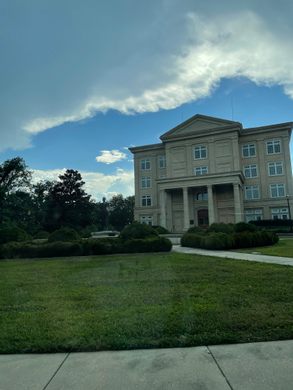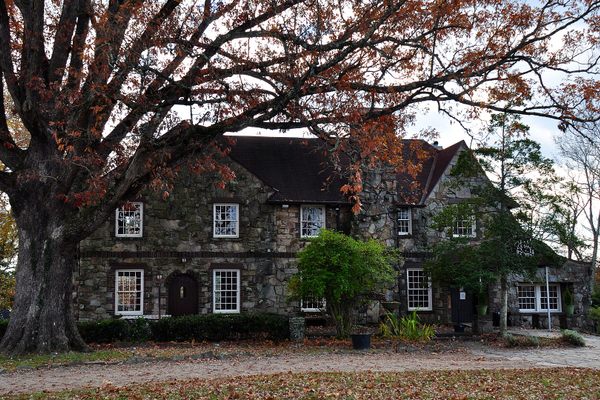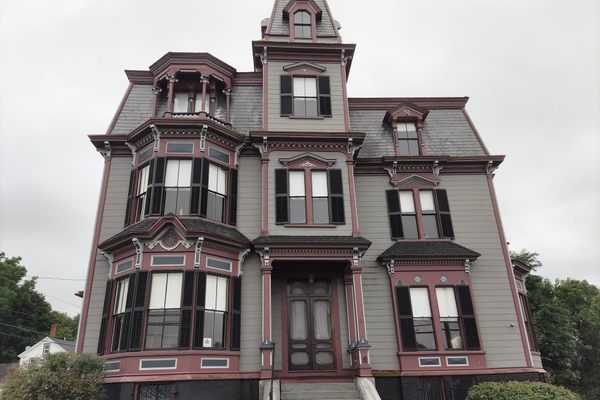The Templeton Library
Mysterious library of an infamous financier and spiritual seeker.
Sir John Templeton was born a bright, vigorous lad in Winchester, TN, with no indication that he would be someday become the sort of man to stumble out of a Gothic Victorian novel.
Along with an extraordinary intelligence, Sir John possessed an uncanny knack for playing the odds. Rising from his father’s failure in cotton futures, Sir John worked his way through Yale by working three jobs and winning hand after hand of poker at which he was a prodigy. Flush with money Templeton became a favorite in Yale’s secret society crowd, pledging into the Elihu Society. This would mark the beginning of the Gothic tinged blood-and-thunder trajectory of his life henceforth.
After graduating the top of his class at Yale, this bright shining up-and-comer skipped the pond over to Oxford to became a Rhodes Scholar. Once there he set his stake in the world of investment banking. The world’s misery was his good fortune. His biggest strokes of luck were The Great Depression and World War II. While other men of his generation followed the cannon’s roar overseas to fight tyranny, Sir John devised a “buy low, sell high” investment strategy that exploited “points of maximum pessimism,” or as he put it more bluntly “Buy when there’s blood on the streets.” This strategy was enough to make him a tycoon and “arguably the greatest global stock picker of the century” according to Money magazine.
His personal life took a turn for the even more Gothic after his first wife died tragically in a motorcycle accident in the 1950’s. A self-styled conservative contrarian, he renounced his American citizenship in 1968 to avoid having to remit any taxes to the very country whose war efforts he had profited from so generously. Templeton then absconded to a tax-shelter in the Bahamas. It’s at this point the man’s story really begins to resemble that of the decadent sultan Vathek in William Beckford’s eponymous Gothic novel. Having utterly excelled in this earthly realm, Sir John turned his wealth and hubris towards matters of the divine.
He established the “Templeton Prize for Progress Toward Research or Discoveries about Spiritual Realities”, which he bragged was “worth more than the Nobel Prize” protesting that the Swedish prize excluded “Religion” as a category. He awarded millions of dollars to many religious figures who would go on to receive the Nobel Prize anyway like Mother Teresa, the Dalai Lama, and Desmond Tutu, but also revivalists like Billy Graham and the Watergate burglar-cum-minister Charles Colson. Whether he was literally “trying to buy his way into heaven,” is up to interpretation.
Templeton was consumed with uniting grandiose religious concepts and science. He would often award the religious prize to scientists like Freeman Dyson and he established a large think tank devoted to his preoccupation with unifying these branches of thought. According to its mission statement, the John Templeton Foundation was started as a “philanthropic catalyst for discoveries relating to the Big Questions of human purpose and ultimate reality” i.e. generally unlocking the Universal Architect’s Great Unknowable Mysteries. (As casual glancers at Greek Mythology and H.P. Lovecraft might note, this can come with consequences.) Currently the Foundation continues to award 70 million dollars a year to whatever causes they believe are currently best achieving this rather abstruse task.
Following the death of his second wife and his increasing age at the turn of the millennium, the capitalist prince turned his attention towards the land of his birth, deciding to consecrate one last monument to himself. It’d be a library, but not just any library. The Templeton Library would not be freely open to the public, nor have established hours. It wouldn’t have any stated purpose, nor a substantial collection of books, nor even a website folks could visit to learn why it was there. The doors would be locked most of the time, yet its grounds would be immaculately maintained with perfectly trimmed arabesque boxwood hedge sculptures surrounding a life-sized bronze statue of the great tycoon himself. It sits smack dab in the Cumberland Plateau at right angles with the land where half the Tennessee Valley can see it. Roughly where a Gothic author might place his scary castle.
In case you think the Gothic-ness of this place is being exaggerated–one last story. One October night in 2001, a group of college kids from the nearby University of the South went urban exploring around the uncompleted structure of the library. One of the undergrads was 19 year old kid from Vermont named Wesley Mitchell who, in a moment of youthful fancy, free-slid down what he wrongly assumed was a laundry chute. Instead of landing in a hamper of clothes, the poor sophomore tripped the sensor of the industrial trash compactor awaiting him at the bottom and was tragically, well… compacted; the type of gruesome fate which reads like something out of a certain genre of 19th Century Romantic literature which doesn’t even bear specific mention at this point.
The great Sir John Templeton expired of pneumonia in the Bahamas in 2008 at the age of 95 shortly after the completion of his library masterpiece. The billionaire’s eerily lifelike bronze statue stands in front of his big Gothic library, his hand outstretched for the public to come shake it anytime.
Community Contributors
Added by
Edited by
The Atlas Obscura Podcast is Back!




























Follow us on Twitter to get the latest on the world's hidden wonders.
Like us on Facebook to get the latest on the world's hidden wonders.
Follow us on Twitter Like us on Facebook